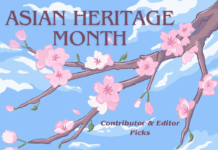The Symposium to Honour the Career of Diana Nemiroff, hosted at Carleton University Oct. 20, was a full day of engaging discussions on the topics that made Nemiroff’s stunning career as a curator possible.
Nemiroff was a senior curator for the National Gallery of Canada (NGC) as well as director of the Carleton University Art Gallery for seven years.
Awarded the Governor General’s Award in Visual Arts in March, Nemiroff has made significant contributions to the Canadian art world.
Symposium organizer Brian Foss admitted that it was difficult to choose topics that would honour Nemiroff’s “distinguished career.”
Foss met Nemiroff 33 years ago when he began his MA at Concordia University in his early 20s.
“[Nemiroff] demonstrated how to build a career while all of us were doing our weekly readings,” he quipped.
Throughout the day speakers were invited to talk about curating contemporary art, curating first nations art, artists and their relationships with museums, and biennials.
While these topics were chosen to highlight the aspects of a fulfilling career, they also brought up important questions about change in the art world.
Audio report by Lindsay Crone
Rebecca Basciano, a second-year art history master’s student, was at the symposium. She said these events are fulfilling, especially for students.
“It’s good to go to these things to hear what the curators are saying about the now, and [to] get that kind of knowledge.”
When discussing the curation of contemporary art, Matthew Teitelbaum, CEO and director of the Art Gallery of Ontario said that “we live in a time of real concern.”
His worry is that curators need to find a way to connect with audiences in a time when museums across North America have seen shrinking revenues.
“I believe the function of museums is to gather people with a purpose,” he said.
He said museums have to be a place of exchange and conversation.
One of the highlights of Nemiroff’s career that was mentioned many times throughout the day was her 1992 exhibition Land, Spirit, Power at the NGC. This noteworthy exhibition highlighted aboriginal and First Nations art, a group often overlooked in the art world.
Jolene Rickard, associate professor at Cornell University, discussed the curation of First Nations art. She also talked about how there are no official categories for aboriginal art. She said that a forum is needed to include voices that have not been represented.
François Morelli, artist and professor at Concordia, talked about the idea of empowerment in terms of “trying to grant agency through art making, through art experiencing, through educational models.”
Morelli weaves the earlier themes of connecting with audiences and hearing more voices in the art world.
When talking about bringing art to communities and engaging with communities Morelli said “I think we can return to this notion of artist celebration in the everyday and where the everyday occurs can be a place of making and receiving art.”
Reesa Greenberg, independent critic and writer, has known Nemiroff since her days as a student at Concordia.
“[Nemiroff] passionately believed in art in Canada and the roles that artists could play in making Canada a better place,” she said.






